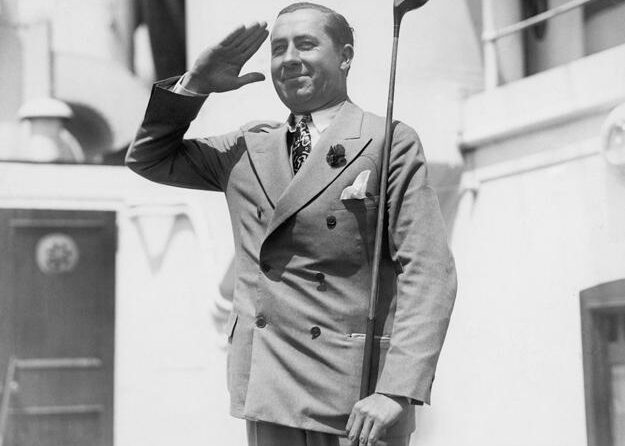As golfers aim for accuracy on the putting green, the importance of a properly fitted putter cannot be overstated. A putter that doesn’t match a player’s unique style can result in erratic strokes adn missed opportunities. Recognizing the signs of an ill-suited putter is essential for maximizing a golfer’s potential.
– The Significance of Proper Putter Fitting for Reliable Performance
Many golfers fail to recognize how a well-fitted putter can enhance their performance on the greens. A mismatch between the putter and a golfer’s individual style can lead to inconsistencies in stroke mechanics, negatively affecting both accuracy and distance control. To assess whether your putter is a hindrance, consider the following elements:
- Length: A putter that is either too long or too short can disrupt your alignment and stroke, resulting in poor contact with the ball.
- Loft: the loft of the putter influences how the ball exits the face. An improperly fitted loft can cause the ball to skid or roll prematurely.
- Lie Angle: An incorrect lie angle can affect the trajectory and aim of your putt, making it essential for consistent delivery.
In addition to evaluating these factors, participating in a professional putter fitting session can be beneficial. These sessions often utilize technology to analyze your stroke and provide insights for improvement. Approaching a fitting session with an open mind can reveal new options that align with your natural putting style. Here’s a brief overview of what to expect during the fitting:
| Fitting Session Component | Description |
|---|---|
| Stroke analysis | Utilizing cameras and sensors to assess your putting stroke. |
| Height Adjustment | Measuring your height to recommend the ideal putter length. |
| Testing Different Models | Trying various putters to find the one that best suits your feel and performance. |
– Indicators That your Putter May Be Impeding Your Game
When assessing your putting performance, pay attention to how your putter feels in your hands. If you experience a lack of confidence during your stroke or if your hands feel shaky as you prepare to strike, it may suggest that your putter is not well-suited for you. An inappropriate grip size or weight can adversely affect your stability and comfort.
Examine your alignment and aim closely. If you frequently miss targets or struggle to line up correctly, your putter’s design may not align with your natural stance. **Look for**:
- Alignment aids on the putter that are ineffective
- Head shape that alters your aim
- Length affecting your posture
Your putting statistics can also highlight underlying issues. If you consistently three-putt or miss short putts, it may not solely be a lack of practice, but rather a putter that doesn’t fit your game. **Consider tracking**:
| Statistic | Indication |
|---|---|
| 3-Putts per round | Potential misalignment |
| Make percentage from 10 ft | Inconsistent stroke |
| Missed short putts | Poor grip or balance |
– Essential Metrics for Effective Putter Selection
Choosing the right putter can significantly influence your performance on the greens. Several key metrics should be evaluated to ensure that your putter complements your unique stroke style.**Length** is crucial; a putter that is too long or short can lead to improper posture and inconsistent strokes. Additionally, the **weight** of the putter can affect the tempo of your swing. heavier putters often promote a more controlled stroke, while lighter ones can enhance feel and adaptability.Lastly, the **lie angle**—the angle between the shaft and the ground—affects how the putter’s face interacts with the ball at impact.
another vital aspect to consider is the **grip size**. if your hands are too large or too small for your grip, it can disrupt your control and feel during the stroke. Experiment with different grip styles to find what feels most comfortable. Furthermore, the **face type**, whether it’s a mallet or blade, can dictate the level of forgiveness on off-center hits. A mallet putter typically offers a larger sweet spot, while blades are often favored by those seeking greater feedback on their strokes.
evaluate the **offset** of your putter, which determines the shaft’s position relative to the blade. A greater offset can definitely help square the face at impact for players who tend to pull their putts. It’s also essential to consider **personal preference**—the aesthetics of the putter can influence your confidence in using it. By analyzing these metrics, you can gain insights into whether your current putter aligns with your stroke, paving the way for many prosperous rounds ahead.
– Pro Tips for Selecting the Right Putter for Your Stroke Style
When choosing a putter,understanding your stroke style is vital for consistency on the green. **Assess your stroke type**: is it straight-back-and-through or an arc? This fundamental difference will guide you in selecting the appropriate putter design.
Next, consider the **length and weight of the putter**.A putter that is too long or heavy can disrupt your natural stroke, leading to inconsistency and frustration. Utilize a **putter fitting guide or consult a professional** to ensure the dimensions align with your stance and comfort level.
| Stroke Style | Recommended Putter Type |
|---|---|
| Straight-back-and-through | plumber’s neck or face-balanced |
| Arc stroke | Toe-weighted or slant neck |
Lastly, don’t overlook the **importance of grip**. The grip affects not only how you hold the putter but also your overall comfort during the stroke.Choose a grip that offers both comfort and control, which can significantly enhance your performance on the greens.
As golfers seek precision on the greens, an ill-fitting putter can greatly impede performance. Addressing potential issues with your putter may be the key to unlocking your best stroke and improving overall game consistency.

Is Your Putter Sabotaging Your Game? Discover the Signs!
Understanding the Importance of Your Putter
In golf, the putter is often considered the most crucial club in your bag. It’s the club you use on the greens, where precision is key. If you’re struggling with your putting game, it may be time to evaluate weather your putter is sabotaging your performance.
Signs Your Putter Might Be Holding You Back
Here are some common indicators that your putter may not be the right fit for you:
- Poor Alignment: Consistent misalignment during shots can suggest an ill-fitted putter.
- Inconsistent Distance Control: If your putts frequently race past the hole or come up short, your putter may not suit your stroke mechanics.
- Uncomfortable Grip: A grip that feels awkward can lead to tension, affecting your overall putting performance.
- Feedback Sensitivity: If you cannot accurately feel the feedback on putts, it may indicate a poorly matched putter.
- Physical Fatigue: If your wrists or arms feel fatigued after a round, it may be due to the weight or design of your putter.
The science Behind Putter Fitting
Putter fitting is not just about the club’s length; manny factors come into play. Understanding these factors can help you optimize your performance on the greens.
1. Length
The length of your putter can greatly affect your stance and alignment.An improperly sized putter can lead to poor posture and inconsistent putting strokes.
2. Lie Angle
The lie angle impacts the direction of your putts. If your putter is too upright or too flat, it can cause you to hit the ball inaccurately.
3. Grip Size
The grip connects your hands to the putter. A grip that is either too thick or too thin can hinder your control and sensitivity.
4. Weight and Balance
The weight distribution of your putter influences your swing. A putter with inappropriate weight can lead to imbalance during your putts.
Benefits of a properly Fitted Putter
Investing time into fitting your putter can yield significant results on the course:
- Enhanced Performance: A well-fitted putter enhances accuracy and distance control.
- Improved Confidence: knowing your equipment is optimized for your style boosts mental confidence.
- Consistent Results: Consistency in your putting strokes translates into lower scores.
- Physical comfort: A great fit reduces fatigue and discomfort, allowing for better focus.
Practical Tips for Evaluating Your Putter
Here are actionable steps you can take to assess whether your putter is sabotaging your game:
1. Conduct a Putter Fitting session
It’s essential to visit a professional who can offer a fitting session tailored to your style and needs.
2. Test Different Models
Try out various putter models to determine what suits you best. Different shapes,weights,and grips can all make a noticeable difference.
3. Evaluate Your Stroke
Work on your putting stroke and see how different putters interact with your technique. Maintaining a consistent stroke is key.
4. Keep Track of Performance
Use a putting journal to track your attempts on the greens and notice trends. This data can highlight specific areas to address.
Case Studies: Triumphant Putter Changes
| Name | Original Putter | New Putter | Outcome |
|---|---|---|---|
| Player A | Standard Blade | mallet Style | Increased accuracy and 3 fewer putts per round |
| Player B | Heavy Putter | Lightweight Putter | reduced wrist fatigue and improved distance control |
| Player C | Too Long Putter | Correct Size Putter | Better alignment and confidence on the greens |
Frist-Hand Experience: What Works
Many golfers, including myself, have experienced the effects of an ill-fitted putter. Here’s my journey:
- The Struggle: I used to miss 3-4 putts per round,and it felt frustrating.
- The Fitting: I finally decided to get fitted, and they suggested a different length and grip size.
- The Result: Almost instantly, my alignment improved, and my confidence surged—lowering my handicap by a full stroke!
The Psychological Aspect of Putting
The mental aspect of putting should not be overlooked.Anxiety, loss of focus, or a lack of confidence can all contribute to poor performance:
1. Visualization techniques
Practicing visualization before attempting a putt can enhance focus and promote a positive mindset.
2.Pre-Putt Routine
Establishing a consistent routine before each putt can help you enter the right mental space.
3. Mindfulness
Staying mentally present during your shot allows you to fully engage with the game and mitigate distractions.
Final considerations
Paying attention to your putter may uncover factors you hadn’t considered, impacting your performance significantly. From alignment issues to grip discomfort, making adjustments may lead to remarkable improvements in your game. Don’t let your putter sabotage your performance — evaluate it today!




